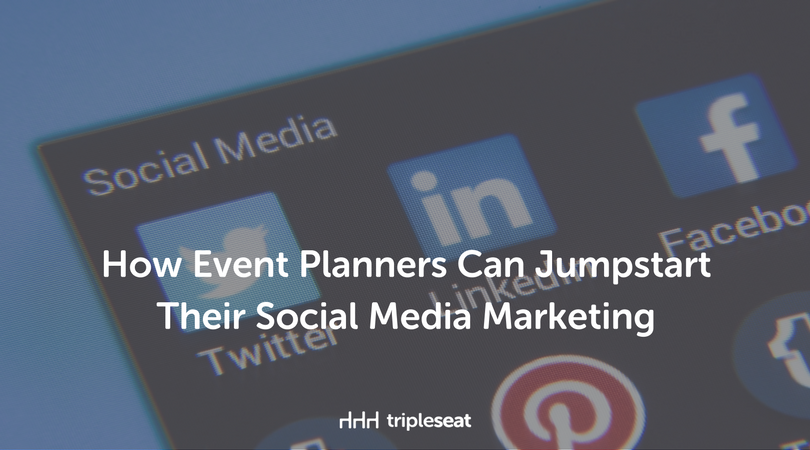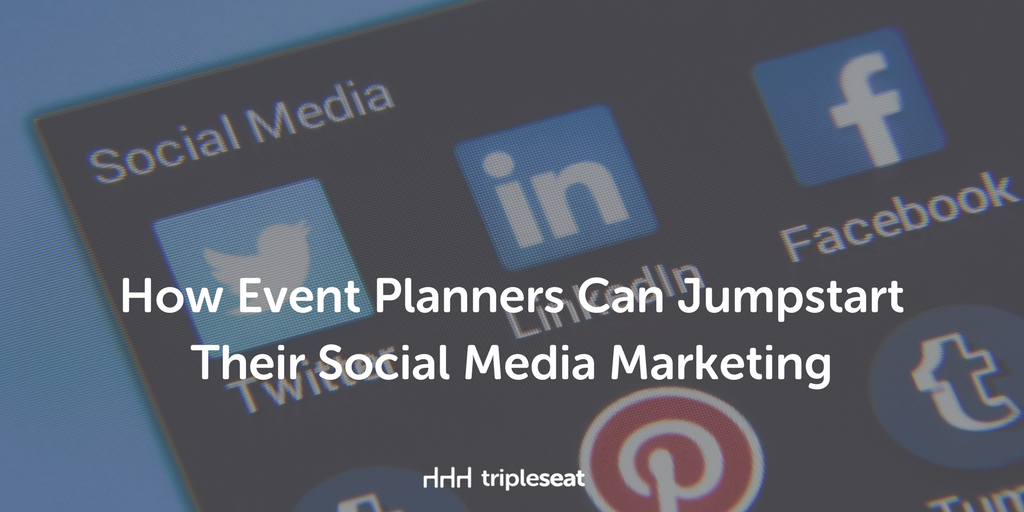How Event Planners Can Jumpstart Their Social Media Marketing

Is this situation familiar?
Your restaurant or venue hasn’t made social media a priority because you’re not sure how to use the networks to drive business. You either haven’t created any social media accounts or you have a few, but you never post to them.
Here’s the deal: You need to have some social media presence because social media is the top marketing tool used by restaurants. And prospects and customers are using it to research businesses like yours. In fact, 49% of people search Facebook to find restaurants.
Don’t worry – you’re not the only one going through social media stress. We hear regularly from Tripleseat users who have social media accounts and aren’t sure how they fit into their venue’s marketing plan and how to even begin to use them for marketing.
Try these 6 tips that event planners can use to jumpstart their social media marketing.
1. Start by evaluating the social networks
This infographic by Tracx is a helpful tool to use so you can get more familiar with which social networks are the most popular, what type of people use them, and what might work for your business. Illumen Media’s 50 Digital Marketing Stats for the Restaurant Business is another great resource to help you understand how customers use social media and other online resources to make decisions about what restaurants to spend their money at.
2. Think about your customers
Next, find out what social networks your customers and prospects are using to search for your restaurant or venue, and maintain a presence on those networks. If you’re not sharing information in the places your audience spends time, you’re not going to reach them. Don’t waste your time maintaining a social network that customers and prospects don’t pay attention to.
Ask your customers whenever you’re having a conversation with them, send a survey via email, ask them on your comment cards, and include the question on relevant online forms or surveys. If you have set up some social networks, take a look at which ones have the most followers and activity. Check your Google Analytics to determine which of these networks are sending the most traffic to your website.
3. Be realistic about your time and resources
It’s important to be consistent with your social media marketing. You need to have a regular presence in order to be visible to your audience, gain a following, and create a community.
How much time can you devote to social media marketing per day? Do you have staff that can devote time to creating posts, monitoring social networks, measuring your marketing efforts, and responding to customers? Do you have money to dedicate to resources (prices range from free and low-cost tools and apps to enterprise business tools that cost hundreds of dollars per month) like social media ads, a social media management and analytics platform, photo editing tools and equipment, and video editing tools and equipment?
Here’s some suggested tools that will fit with just about any budget:
Social media management and analytics
- Buffer (free to $399 per month)
- Hootsuite (free to +$499 per month)
- CoSchedule ($40 to $2,200 per month)
- Agorapulse ($49-$299 per month)
Image editing and graphic creation
- Adobe Spark (free to $9.99 per month)
- Canva (free to +$12.99 per month)
- Easil (free to $59 per month – includes templates for the restaurant and hospitality industry)
- PicMonkey ($5.99-$8.99 per month)
Video editing and creation
- Boomerang app from Instagram (free)
- Adobe Spark (free to $9.99 per month)
- Lumen5 (free to $49 per month)
- Wave ($39 to $149 per month)
4. Determine which social networks are the best fit
Use what you’ve learned about the social networks, your customers’ needs, and available time and resources to determine what social networks that are right for your business. Choose the networks that hit the sweet spot of popularity, demographics, customer preferences, and your business’ time and resources.
If you are completely new to social media, I’d suggest that you start with Facebook. It’s the most popular of all the social networks, with 2 million monthly active users, so it’s likely that a lot of your customers and prospects are already using it. Facebook has created pages for multiple industries, including restaurants, so take advantage of the resources available on the Facebook Business for restaurants site.
5. Set up your accounts
Once you choose what social networks to focus on, start an account for your business. Fill out all of the information about your business – location, hours, website, parking, menu, event lead form, profile photo, and cover photo. Each network has their own size requirements for photos, so make sure you are using the right image sizes.
Once your social media accounts are ready, promote them to your audience by talking about them and linking to them in your email marketing, on your website, on your blog, and from other social media profiles. Add your social presence to your printed materials: business cards, signs, table tents, and menus.
6. Post, evaluate, and plan
Start posting to your social networks and make note of what types of posts (text, link, video, photo, graphics), themes, and topics are doing well and what times and days are working the best. Each network has its own reporting tools (known as insights or analytics) that will show you what posts are getting the most activity.
Now that you have a handle on what types of content work for you and the best days and time to post, it’s time to create a posting plan. Create a schedule for your social networks for each day of the week, the times to post, types of content, and themes or topics. If you need some guidance, read this post from CoSchedule, which includes a downloadable social media content calendar, tips on how to audit your content, and a list of the optimal number of characters, hashtags, and emojis to include in your posts.
Keep in mind that social media marketing works when you use a mix of free and paid content. Social media isn’t free. All social networks have an algorithm designed to work in the users’ favor, which means showing more posts from family and friends, and fewer posts from businesses. The businesses that they interact with the most will get preference over businesses they don’t engage with. If you want your content to get seen, it’s important to constantly review what’s been working for your audience and keep posting the free content that they want to see. You also need to pay for social media advertising to give you an edge and get your posts directly in front of the people you want to reach.
Be patient, improve, and get the results you want
Whether you’re just getting started with social media marketing, or you have created accounts and put your efforts on pause, these steps are essential. Taking the time to evaluate what social networks will be the best fit will help you focus and master one or two networks, instead of spreading yourself too thin across multiple platforms that aren’t connecting with your audience and don’t help promote your business.
When you feel comfortable with your social media marketing on one network, add another one and apply the lessons you’ve learned. It may take some time, but the effort you put into getting social media marketing right will pay off by driving new business.
Need more marketing help?
Check out Tripleseat’s posts on social media marketing, email marketing, and other digital marketing tools.
Editor’s Note: An edited version of this article appeared in Tripleseat’s Seated magazine, Spring 2018 issue.


